Pig's Unreal Sense of SMELL: Everything You Need to Know
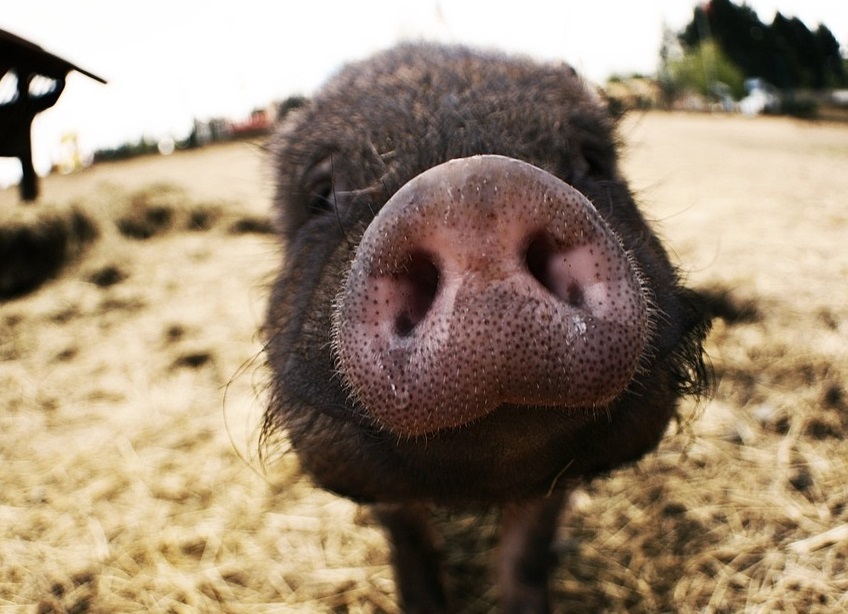
Want to uncover the mind-blowing secrets behind a pig's sense of smell?
Ever wondered how these adorable creatures possess such an extraordinary ability? 🐷
I know what you're thinking, "How could pigs possibly have such an exceptional talent?"
Don't worry, I've got all the incredible details that will leave you in awe.
So, without further ado, let's dive into the fascinating world of pigs' sense of smell.
Pig's Sense of Smell: An Overview
Pigs possess an extraordinary sense of smell, surpassing even that of a bloodhound. Their keen olfactory abilities enable them to locate food sources, detect diseases like cancer, and assist in law enforcement activities. Their remarkable snouts make them fascinating pets and impressive allies in various fields.
However, let me break it down for you in simpler terms.
Pigs have an insanely powerful sense of smell, one that puts ours to shame.
They can sniff out scents as faint as parts per trillion.
Can you imagine?
That's like finding a needle in a haystack while blindfolded.
But why is their sense of smell so remarkable?
Well, it all starts with their snouts.
Pigs have long and flexible snouts that are designed for sniffing.
Inside those snouts are millions of olfactory receptor cells that allow them to pick up on even the slightest whiff of something interesting.
This heightened sense of smell has served pigs well throughout history. Humans have recognized their talent and have harnessed it for various purposes, like truffle hunting or searching for hidden contraband.
Pigs have been our loyal smell detectives for millennia.
Not only can they find truffles in the forest or drugs at the airport, but they can also detect diseases like cancer. Yes, you heard me right. Scientists are training pigs to use their incredible sense of smell to identify certain types of cancer in patients.
It's mind-blowing stuff, really.
In fact, some researchers believe that pig noses hold the key to developing state-of-the-art medical diagnostic tools.
Imagine a world where doctors use pigs to sniff out diseases before they even show up on traditional tests.
It sounds like something out of a sci-fi movie, but it's closer to reality than you might think.
So next time you see a pig rooting around in the dirt with its snout, remember that it's not just searching for food.
It's tapping into its superpower, its sense of smell, which allows it to navigate the world in a way we can only dream of.
Pigs truly are the master sniffers of the animal kingdom.
Main points I'll expand upon further down this article:
- Pigs have an exceptional sense of smell, surpassing that of humans.
- Pigs possess 1113 functional olfactory receptor genes and can detect scents underground.
- Wild hogs can be destructive and pose a threat to humans.
- Pigs have excellent memory and can recognize individuals.
- Pigs have a complex olfactory system with multiple glands and receptor genes.
- Pigs have a sensitive snout that helps them explore and dig efficiently.
- Pigs have limited vision with partial colorblindness and difficulty perceiving detail and depth.
- The domestic pig brain has well-developed olfactory areas.
- The warthog, a pig family member, can run up to 35 MPH.
- Pigs have a remarkable sense of smell and communication abilities and prefer group living arrangements.
And now, let me dive deeper into the incredible capabilities of a pig's sense of smell...
The Incredible Sense of Smell in Pigs
Pigs possess an extraordinary sense of smell - it's one of their superpowers. Their nose is so sharp that they can differentiate between various scents and even remember them for a long time. Pretty impressive, huh?
This sniffer offers them numerous advantages.
They use it to detect food and communicate with each other.
It's like piggy radar!
Here's the mind-blowing part:
Pigs' sense of smell surpasses ours by far.
By far.
They have over 1,100 working olfactory receptor genes.
Compare that to our measly 400!
With their exceptional sniffers, they could detect underground odors from up to 25 feet away.
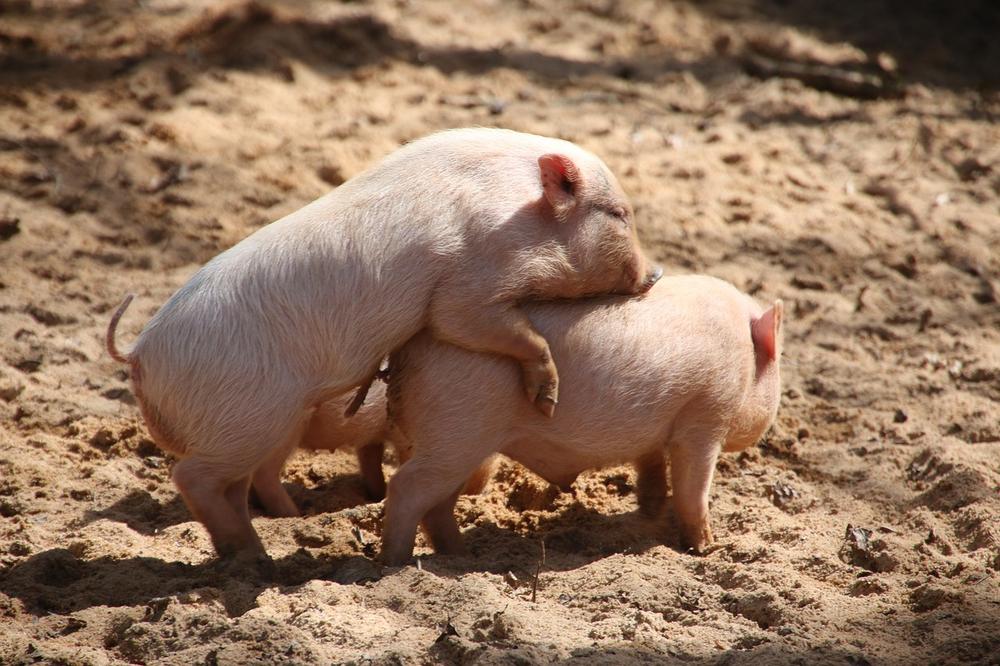
Nothing escapes these pig detectives.
But wait.
There's also a downside.
Wild hogs, weighing over a massive 1000 pounds, can wreak havoc.
Not to mention, they pose a threat to humans too.
So, it's not all rainbows and butterflies. Nevertheless, let's acknowledge their incredible sense of smell and embrace the piggy superpowers! 😮
And if you're as fascinated by pigs as I am, you'll definitely want to dive deeper into their world of communication.
Understanding how pigs communicate and deciphering their behavior patterns can really give you a whole new perspective on these incredible creatures.
That's why I highly recommend checking out How Do Pigs Communicate, where I delve into the fascinating realm of piggy communication.
Trust me, it's a captivating read that will leave you amazed at the complexity and depth of their social interactions.
The Importance of a Pig's Sense of Smell
A pig's exceptional sense of smell enables them to locate hidden food sources like vegetation, roots, and tubers. Their remarkable olfactory capabilities, combined with their cognitive abilities, make them adaptable and perceptive in their environment, setting them apart as fascinating animals.
A pig's sense of smell is absolutely incredible. Seriously, I'm not joking here. These little guys can sniff out food sources that we humans wouldn't even dream of finding. They know where to find vegetation, roots, and tubers without breaking a sweat. And get this:
They do it all with their snout.
But wait, there's more. Pigs don't just rely on their sense of smell in the moment; their memory is off the charts too.
They can remember and recognize other animals, including us humans.
So if you're nice to a pig, chances are they'll never forget you.
That's real friendship right there.
Now, let's talk about what all of this means for our little pink friends. Well, it means they are masters at adapting and navigating their environment.
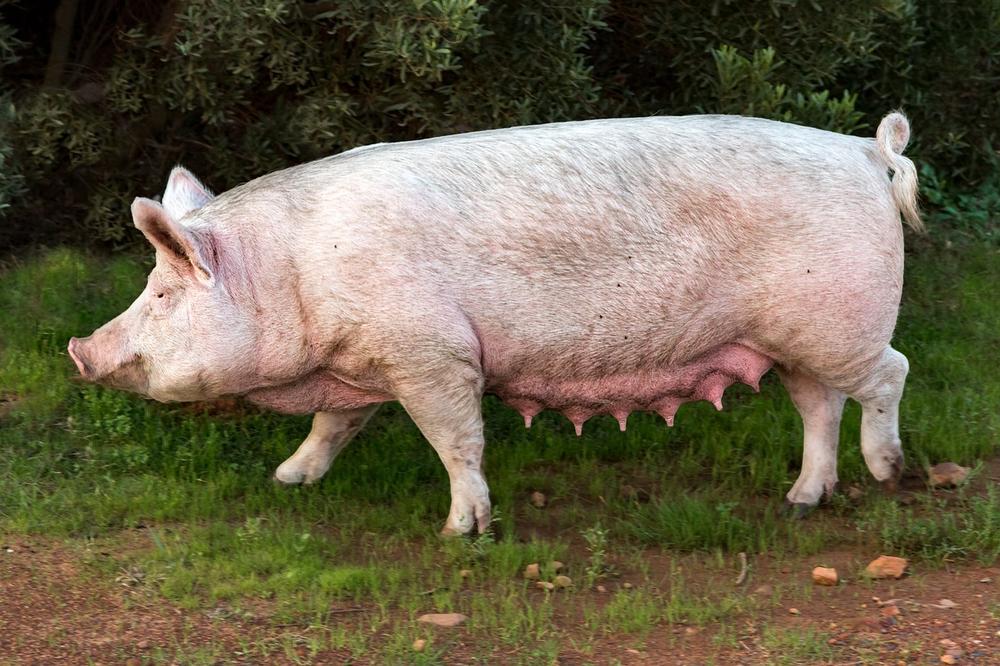
With their exceptional sense of smell and sharp minds, they can solve any problem that comes their way. Whether it's finding food, finding shelter, or avoiding predators, pigs have got it under control.
It's like they have their own built-in GPS system that never fails.
So next time you see a pig and admire its cute little snout, remember just how crucial that sense of smell is for their survival.
It's one of the many reasons why pigs are such extraordinary creatures.
Now, here's the deal...
There's so much more to a pig's sense of smell than meets the eye.
Want to know the best part?
Their olfactory system is incredibly intricate, with various components working together seamlessly.
So, let's dive deeper into the fascinating details and unravel the mystery behind this extraordinary sense...
The Intricate Anatomy of a Pig's Nose and Olfactory System
Pigs have an incredible sense of smell, my friend.
Their noses are something else.
Inside a pig's snout, there are these intricate scroll-like structures called nasal turbinates that filter incoming air and maximize surface area.
It's like having a built-in filtration system.
Smart little piggies!
But wait, there's more.
Pigs don't just have one or two glands in their olfactory system, they have NINE!
Talk about being high maintenance, huh?
These glands help them detect all kinds of smells around them.
And get this, a pig's olfactory bulb is divided into approximately 260 sections.
That's a serious amount of nasal real estate!
Think of it as having your entire neighborhood mapped out in your brain.
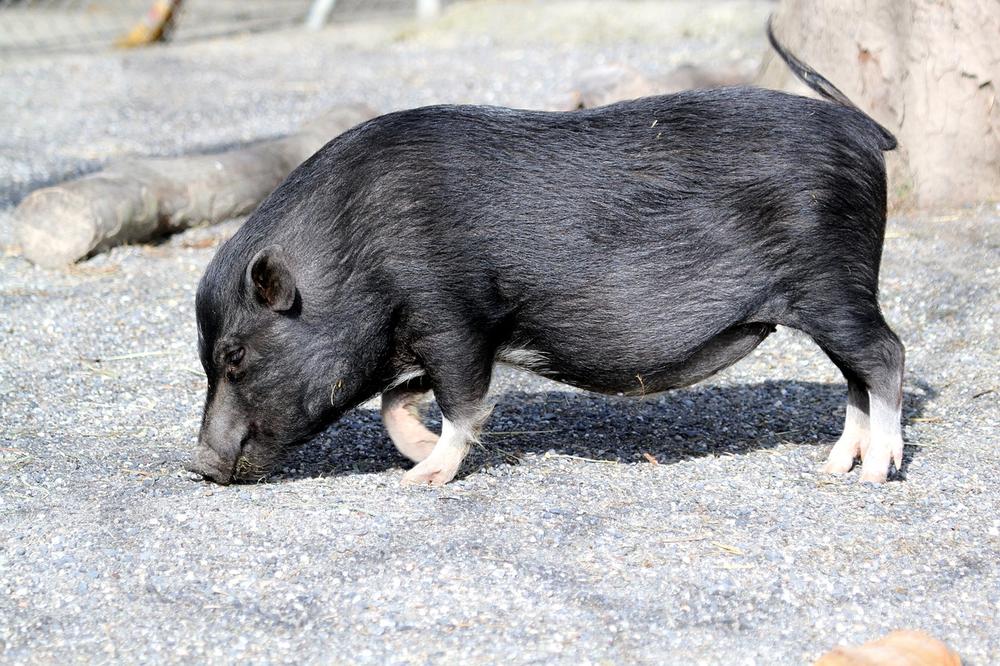
To really show off its smelling superpowers, the olfactory bulb connects to the vomeronasal organ through the accessory olfactory bulb.
It's like there's a whole communication network going on up there.
Here's what really blows me away:
Pigs have a flexible snout that makes them ultra-sensitive to touch.
That's why they're such great explorers and amazing diggers.
They never miss a beat when they're searching for treats.
Unfortunately, their vision isn't as impressive as their nose. Pigs can only see partial colors and struggle with details and depth perception.
So let's just say they rely on their sense of smell more to navigate the world.
Oh, and here's another interesting fact:
A pig's brain is relatively large compared to other animals.
It has specific areas for processing smells and other cognitive functions.
Those dendrites (those tree-like branches of nerve cells) in the olfactory cortex?
In pigs, they're even more extensive and complex compared to rodents.
Pretty impressive brains on these little piggies!
Alright, that's the lowdown on a pig's nose and sense of smell.
Really fascinating stuff if you ask me. 😄
Pigs' Sense of Smell Compared to Other Animals
Pigs possess a remarkable sense of smell, surpassing that of humans. With over 1,100 functional olfactory receptor genes, pigs outshine us in the sniffing department. Their incredible olfactory abilities make them the ultimate champions of the scent world.
Now, let me give you the lowdown.
Just think about it - pigs have over 1,100 genes that are only for smelling.
That's how mind-blowing their sense of smell is!
They've got a whole bunch of olfactory receptor genes that let them pick up scents we can only imagine.
Humans have around 6 million olfactory receptor genes, but compared to pigs, we're small potatoes.
Pigs have a whopping 1,113 functional olfactory receptor genes.
And if that wasn't enough, they also sport an extra 188 pseudogenes that show off their epic ability to discriminate smells.
With all those super sniffing powers, pigs can nail a wide range of scents with precision.
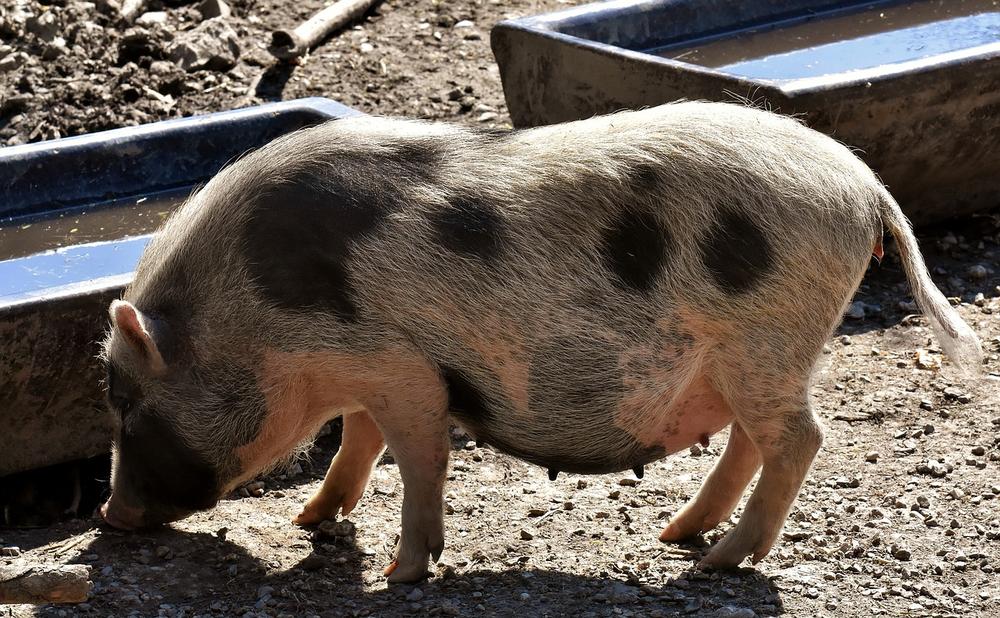
They can catch a whiff of food from miles away, spot danger, and even detect lurking predators without breaking a sweat.
And speaking of interesting pig trivia:
Did you know that warthogs, who are part of the pig fam, can zip along at speeds of up to 35 MPH?
Imagine a creature that not only sniffs out trouble but runs away from it faster than Usain Bolt himself!
So next time you see a pig on a farm or in the wild, remember their unbelievable sense of smell.
It's just one of many things that make these animals so captivating to watch.
But hey, don't feel down about your own sense of smell.
Sure, pigs skyrocket in the realm of scents, but you bring your own incredible talents to the table.
Who needs a pig's snout when you've got plenty of other impressive senses, am I right?!
And, if you thought their sense of smell was impressive, pigs have even more fascinating abilities that contribute to their social nature and interactions with other animals.
Let me take you deeper into the world of these captivating creatures!
The Role of a Pig's Sense of Smell in Social Behavior and Communication
Pigs have an incredible sense of smell.
They rely on this sense to navigate their world and communicate with other pigs.
So, let me break it down for you. Here's what their sense of smell allows them to do:
- Pigs can detect scent molecules in the air. This skill helps them find food, spot potential threats, and find a mate.
- They can identify individuals by their unique scent profiles. This helps them establish social order and form strong bonds.
- By sniffing each other, pigs can read emotional cues like fear, aggression, or contentment. It helps them interact socially.
- Female pigs emit different pheromones when they're ready to mate. Male pigs use their sense of smell to pick up on these signals and make their move.
- Each pig has its own preferences in terms of food, bedding, and playmates. Through smelling, they can communicate likes and dislikes, making group dynamics smoother.
In essence, a pig's sense of smell is crucial for their social behavior and communication.
It's a powerful tool that helps them navigate their environment and connect with fellow pigs.
So, remember this:
The next time you meet a pig, appreciate how vital their sense of smell is to their everyday life.
But did you know that the environment plays a significant role in a pig's olfactory abilities?
Let me share some fascinating insights with you...
Environmental Factors Affecting a Pig's Sense of Smell
- When it's hot and humid, the molecules that carry smells can get messed up, making it hard for pigs to sniff things out properly. This means their sense of smell gets messed up too.
- Loud noises freak pigs out big time. They hate it! It messes with their mood and makes them stressed out. So you gotta keep them in places where it's nice and quiet, and talk to them gently.
- Pigs are weirdly clean animals. They absolutely hate dirt in their cozy spots to sleep and eat. If you wanna make them happy and healthy, you better keep their living areas squeaky clean.
- You might think that pigs stink because they're dirty, but that's not true. They don't sweat like us, so they roll around in mud to cool off and keep bugs away. Smart move, right?
- The strong smell usually associated with pigs doesn't come from their bodies, but rather from where they live. Pigs themselves don't have a strong odor. They're actually naturally clean critters.
- These piggies just keep on growing! Some of them can even weigh over 400 pounds when they're sent to slaughter. That's why their sense of smell is super important for them to navigate their world.
So if we understand how the environment affects a pig's sense of smell, we can take care of them better and ensure they're happy and healthy.
Training Pigs to Use Their Sense of Smell in Specific Tasks
To train your pig to use their sense of smell effectively, try these 10 steps:
- Begin by hiding treats for them to find using their nose.
- Gradually increase the difficulty of the hiding spots.
- Use positive reinforcement and praise when they successfully locate the hidden items.
- Introduce specific scents or odors for them to identify.
- Train them to recognize and alert you to the presence of contraband substances.
- Utilize their sense of smell for environmental contamination detection.
- Consider training your pig for law enforcement purposes, such as drug detection.
- Explore opportunities for truffle hunting with your pig, where their sense of smell truly shines.
- Measure your pig's weight by calculating the girth behind the front legs and length from ears to tail base.
- Consistency is key - practice these tasks regularly to reinforce their sense of smell abilities.
With these steps, you can harness your pig's incredible sense of smell and engage them in specific tasks efficiently. 💪
And that's all for today folks.
You've made it to the end of my blog post, so let me ask you... Did you enjoy it? I put in a ton of effort into creating comprehensive and helpful blog posts. It's definitely time-consuming, but I genuinely love doing it. So, it would mean the world to me if you could click on any of the social sharing icons to share this post with others. I really appreciate your support! Thank you!
Until next time,
-Chris Campbell